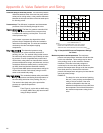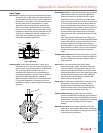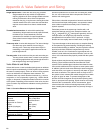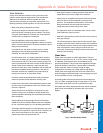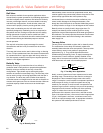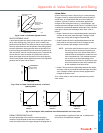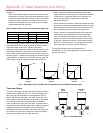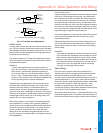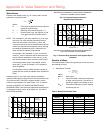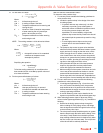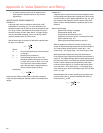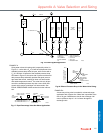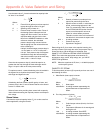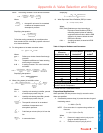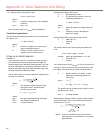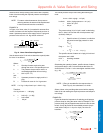
254
Water Valves
Determine the capacity index (C
v
) for a valve used in a water
application, using the formula:
Where:
Q = Flow of fluid in gallons per minute required
to pass through the valve.
G = Specific gravity of the fluid (water = 1).
h = Pressure drop in psi. See Figures 14 and
15 for glycol solution correction values.
NOTE: The calculated C
v
will rarely match the C
v
of an avail-
able valve. For most accurate proportional control,
select the valve with the next lower C
v
value, and
increase the pressure drop across the control valve to
achieve the required flow through the coil by reducing
the setting of the balancing valve. Otherwise, turn-
down ratio will be reduced, proportionally.
For example, if the calculated C
v
is 87, and the two
closest C
v
values are 63 and 100, the best choice for
control precision would be the valve with a C
v
of 63,
and increase pressure drop across the valve by 90%.
If increased pressure drop is not possible, use the
valve with C
v
of 100, and accept a 13% reduction in
valve rangeability.
For two-position control, always chose the largest C
v
greater than the coil with acceptable close-off pressure
rating.
Determining the C
v
of a water valve requires knowing the
quantity of water (gpm) through the valve and the pressure drop
(h) across the valve. If the fluid is a glycol solution, use the
pressure drop multipliers from either Figure 14 or 15. See the
sections on QUANTITY OF WATER and WATER VALVE
PRESSURE DROP. Then select the appropriate valve based on
C
v
, temperature range, action, body ratings, etc., per VALVE
SELECTION guidelines.
REPRINTED BY PERMISSION FROM ASHRAE HANDBOOK—
1996 HVAC SYSTEMS AND EQUIPMENT
Fig. 14. Pressure Drop Correction for
Ethylene Glycol Solutions
REPRINTED BY PERMISSION FROM ASHRAE HANDBOOK—
1996 HVAC SYSTEMS AND EQUIPMENT
Fig. 15. Pressure Drop Correction for Propylene Glycol
Solutions.
Quantity of Water
To find the quantity of water (Q) in gallons per minute use one of
the following formulas:
1. When Btu/hr is known:
Where:
Btu/hr= Heat output.
K = Value from Table 3; based on temperature
of water entering the coil. The value is in
pounds per gallon x 60 minutes per hour.
TD
w
= Temperature difference of water entering
and leaving the coil.
Table 3. Water Flow Formula Table
C
V
QG
h
-------------=
0
0.8
1.0
1.2
1.4
1.6
40 80 120 160
PRESSURE DROP CORRECTION FACTOR
TEMPERATURE, F
ETHYLENE
GLYCOL
SOLUTION
WATER
M12226
10%
20%
30%
40%
50% BY MASS
Water Water
Temp F K Temp F K
40 502 200 484
60 500 225 483
80 498 250 479
100 496 275 478
120 495 300 473
150 490 350 470
180 487 400 465
0
0.8
1.0
1.2
1.4
1.6
40 80 120 160
PRESSURE DROP CORRECTION FACTOR
TEMPERATURE, F
PROPYLENE
GLYCOL
SOLUTION
WATER
M12227
10%
20%
30%
40%
50% BY MASS
Q
Btu hr⁄
K TD
w
×
----------------------=
Appendix A: Valve Selection and Sizing



